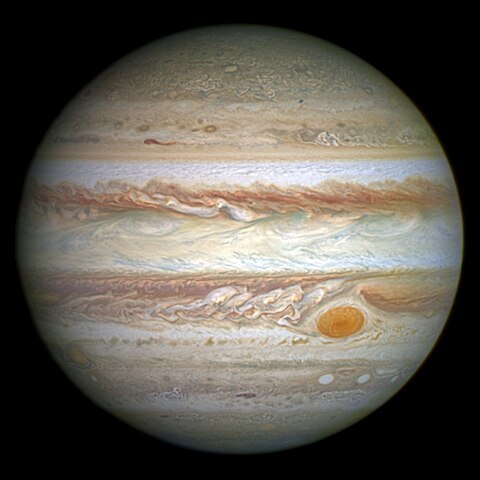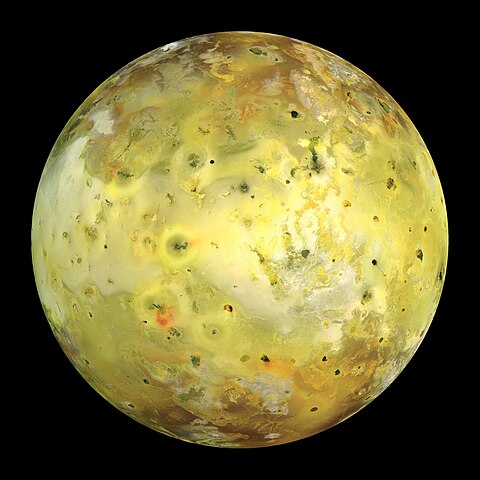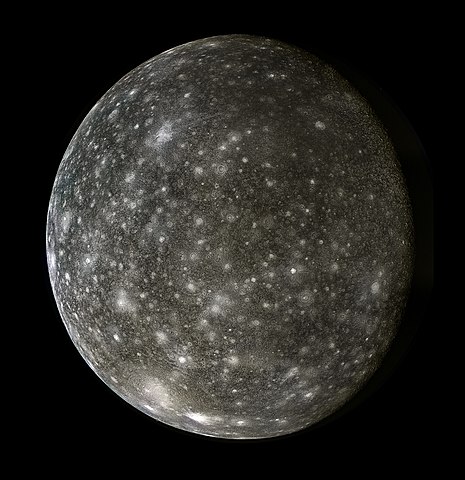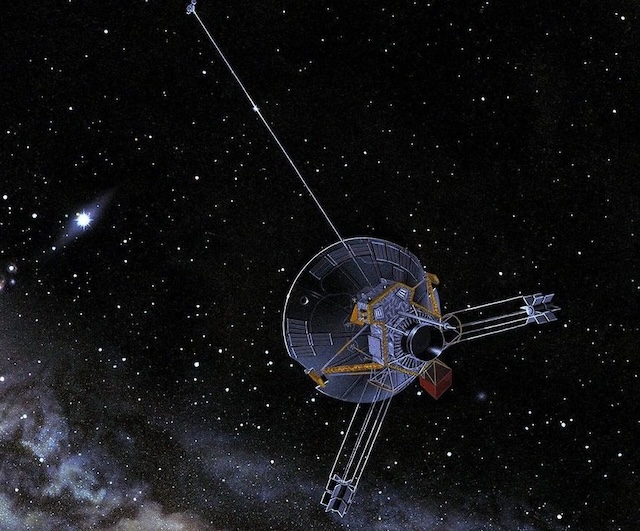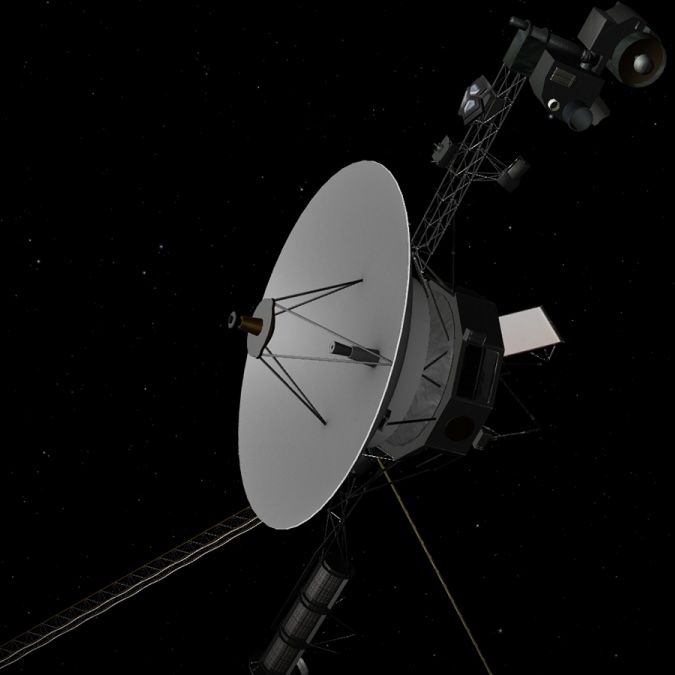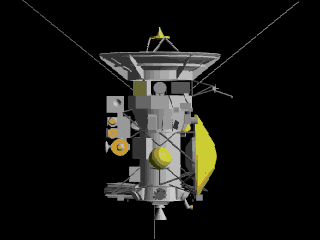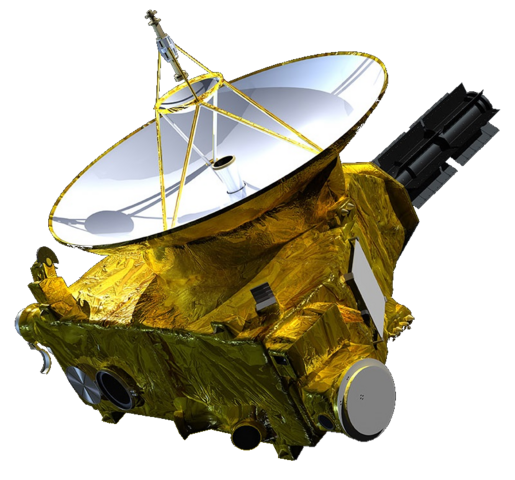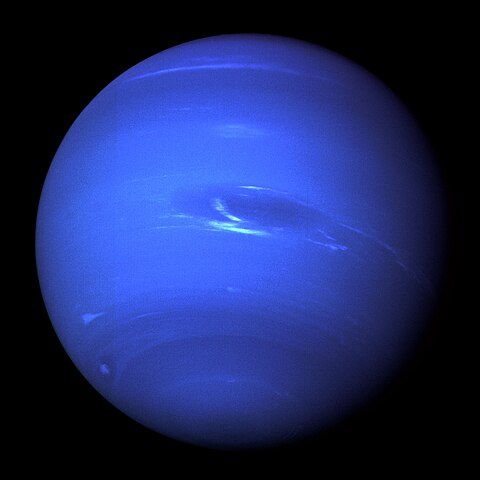1 day / second
0.5 AU
Jupiter
Planet
The largest planet in the Solar System, Jupiter is a gas giant with distinctive bands of swirling clouds, a powerful magnetic field, at least 95 moons, and an ongoing storm called the Great Red Spot that has raged for centuries.
Key Facts
orbital regime | Outer System |
learn more | Wikipedia |
mass | 1.8982e+27 kg |
radius | 69,911 km |
hill radius | 0.338 AU |
semi-major axis | 5.203 AU |
eccentricity | 0.049 |
inclination | 1.303º |
longitude of the ascending node | 100.464º |
argument of periapsis | 273.867º |
orbital period | 11.868 years |
sidereal rotation period | 9.925 hours |
axial tilt | 3.13º |
surface gravity | 2.643 g |
discovery date | Visible to naked eye since ancient times |
name origins | Named after the Roman king of gods, Jupiter |
albedo | 0.343 |
material composition | Primarily hydrogen and helium gas giant with liquid metallic hydrogen core |
density | 1,326 kg/m³ |
Major Moons
Io
The most volcanically active body in the Solar System, Io is a tortured moon whose constant eruptions and sulfur dioxide plumes create an ever-changing surface of reds, yellows, and whites.
Europa
An icy moon with a smooth, cracked surface covering a deep subsurface ocean, making it one of the most promising locations in the Solar System to search for extraterrestrial life.
Ganymede
The largest moon in the Solar System and the only one known to generate its own magnetic field, Ganymede features a mix of ancient dark cratered terrain and lighter grooved regions created by tectonic forces.
Callisto
The second-largest of Jupiter's Galilean moons and the third-largest moon in the Solar System, heavily cratered Callisto appears ancient and inactive with a dark, icy surface that has remained largely unchanged for billions of years.
Spacecraft Visits
Pioneer 10
Flyby
Launched in 1972, visited in 1973
Pioneer 10 completed the first-ever flyby of Jupiter on December 3, 1973, passing within 132,252 kilometers of the planet's cloud tops and capturing detailed images while measuring the planet's radiation belts, magnetic field, and atmosphere.
Pioneer 11
Flyby
Launched in 1973, visited in 1974
Pioneer 11 completed the first-ever flyby of Jupiter's polar regions on December 2, 1974, passing within 26,400 miles of the gas giant while capturing detailed images and collecting data about its intense radiation belts.
Voyager 1
Flyby
Launched in 1977, visited in 1979
Voyager 1 made its closest approach to Jupiter on March 5, 1979, capturing detailed images of the planet's atmosphere, rings, and moons while discovering volcanic activity on Io and passing within 349,000 kilometers of the gas giant.
Voyager 2
Flyby
Launched in 1977, visited in 1979
Voyager 2 completed its Jupiter flyby on July 9, 1979, capturing over 18,000 images of the planet and its moons while discovering three new Jovian satellites, Jupiter's faint ring system, and the first active extraterrestrial volcanoes on Io.
Ulysses
Gravity Assist
Launched in 1990, visited in 1992
Ulysses used Jupiter's immense gravitational field in February 1992 to slingshot into a unique polar orbit around the Sun, allowing it to study the solar wind and magnetic fields from a new perspective.
Galileo
Orbiter
Launched in 1989, entered orbit in 1995
Galileo orbited Jupiter for nearly eight years, conducting 35 flybys of the Jovian moons, discovering evidence of subsurface oceans on Europa, and studying the planet's atmosphere until its deliberate destruction in Jupiter's atmosphere in 2003.
Cassini
Gravity Assist
Launched in 1997, visited in 2000
The Cassini spacecraft made its closest approach to Jupiter on December 30, 2000, using the gas giant's gravity to gain speed for its journey to Saturn while capturing over 26,000 images of the Jovian system.
New Horizons
Flyby
Launched in 2006, visited in 2007
New Horizons used Jupiter's gravity for a speed-boosting flyby in February 2007, coming within 2.3 million kilometers of the planet while capturing detailed observations of Jupiter's atmosphere, rings, and moons.
Juno
Orbiter
Launched in 2011, entered orbit in 2016
After a five-year journey through space, Juno entered Jupiter's orbit on July 4, 2016, beginning its mission to study the gas giant's composition, gravity field, magnetic field, and polar magnetosphere.
Europa Clipper
Orbiter
Launched in 2024, planning to enter orbit in 2030
Europa Clipper will enter orbit around Jupiter in 2030 to conduct detailed reconnaissance of the icy moon Europa through about 50 close flybys, studying its potential for harboring life beneath its frozen surface.
Jupiter Icy Moons Explorer
Orbiter
Launched in 2023, planning to enter orbit in 2031
The Jupiter Icy Moons Explorer, launched in 2023, will arrive at Jupiter in 2031 to begin its 3.5-year mission studying Jupiter's magnetic field, atmosphere, and three of its largest moons: Ganymede, Callisto, and Europa.
